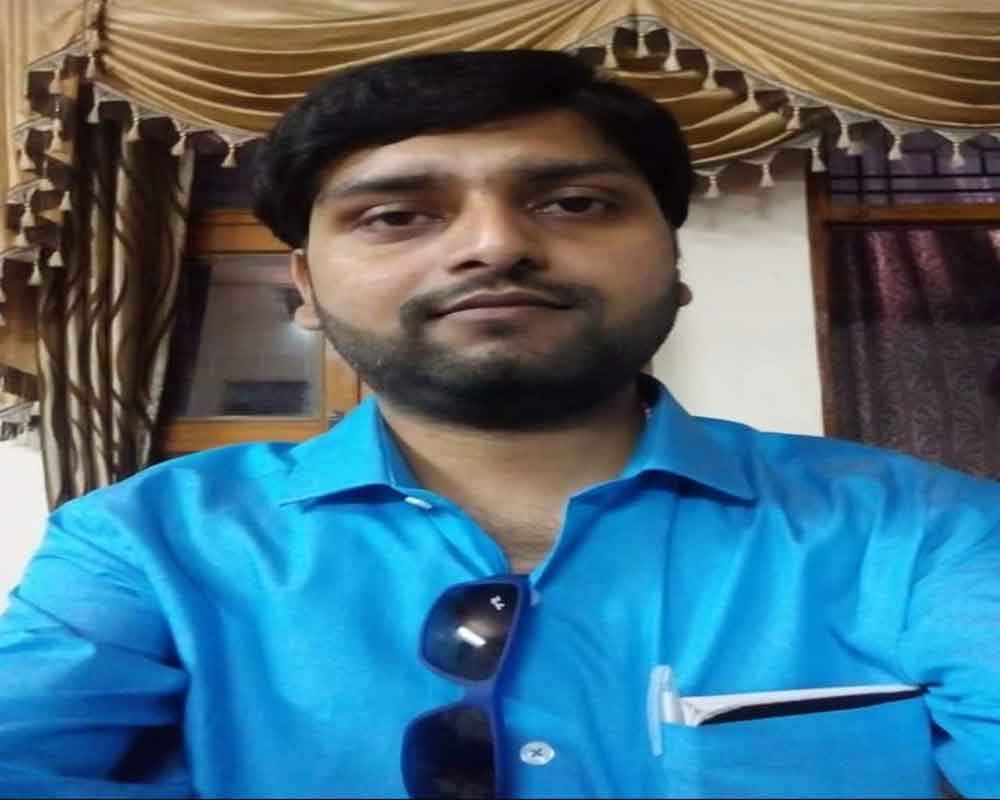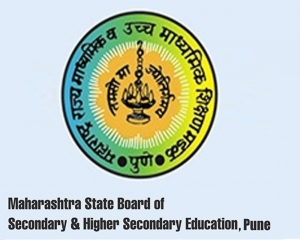For patients who are diagnosed with Ankylosing Spondylitis (AS), learning how to fight the chronic disease in itself can be an emotionally draining and frightening experience. Musical instrument player-turned-journalist Ankur Shukla shares his story and his bid to help others with The HEALTH PIONEER.
It can be a frustrating process to feel unwell for a long without knowing what’s causing your pain. AS hit me when my career as an instrument player was at its peak in 2015-16. But it took innumerable rounds to several doctors and umpteen medical tests to identify the disease which initially started with unbearable pain in my lower back even as X-ray reports were giving me a clean chit. For years, before the formal diagnosis, I struggled to live with the unbearable pain.
To add to my woes, a doctor not only wrongly declared that I was having bone TB but also put me on a related line of treatment that included injections. It only worsened my situation. Due to its side effects, while I became bed-ridden, a delay in diagnosis started to cause postural deformity in my body. My neck was bending forward and I could not understand anything.
I had to quit my love for the musical instrument Sitar, as I couldn’t sit for long hours. Again, a string of investigations was conducted. In the end, a medical board of doctors was set up in the hospital and my HLA-B27 test was done. Subsequently, I was declared to be suffering from AS.
Clearly, there is a lack of awareness about this disease not only at the societal level but also at the medical level. Even though a physician can diagnose this disease, it can only be treated by a specialist Rheumatologist.
The disease not only affects you physically, it also has psychological, and socio-economic consequences. Pain commonly causes feelings of fear, helplessness, anxiety, and sadness.
During the course of my treatment, I found that a large number of youth are suffering from AS, becoming jobless, and considering themselves a burden on their families and economy. The biggest side effect of this disease is that it fuses all the joints of the body—which affects the spine and hip joints the most. There is no treatment available in medical science for this disease and its causes are also not known. Its management is very expensive and unfortunately, there is no provision for providing health insurance to the patients affected by AS in our country.
This disease has been delisted by the Insurance Regulatory and Development Authority (IRDA) as government agencies do not consider it to be serious and fatal. But overall, this disease leaves you handicapped at a young age. Although my reflexes saved me to some extent, there were some side effects on my body which can be somehow corrected with surgery.
Cut to present: This experience has inspired me to give back and improve the lives of others going through similar pangs. I have started the online campaign CAAS India and created the website https://caasindia.in/ to create awareness about this little-known but serious disease.
I am raising awareness about the physical and mental effects of AS. I believe that help from authorities like ensuring insurance besides positive thinking can reduce the agony of the sufferers.
This old person’s disease hits youngsters hard
Nearly 30 - 40 lakh people, particularly young males in India suffer from Ankylosing Spondylitis (AS), a form of inflammatory arthritis that predominantly affects the spine and sacroiliac joints (where the spine connects to the pelvis), causing debilitating pain in the region. If left untreated, AS can cause permanent joint damage and disability in many patients. Since it usually afflicts youth (17 to 42 years of age), it has huge physical, psychological, economic, and, societal consequences, finds ARCHANA JYOTI
What is AS?
It is a form of arthritis that causes chronic (long-term) spine inflammation. It inflames the sacroiliac joints located between the base of the spine and the pelvis. This inflammation, called sacroiliitis, is one of the first signs of AS. Inflammation often spreads to joints between the vertebrae, the bones that make up the spinal column. This condition is known as spondylitis.
Some people with AS experience severe, persistent back and hip pain and stiffness. Others have milder symptoms that come and go. Over time, new bone formations may fuse vertebrae sections together, making the spine rigid. This condition is called ankylosis.
How common is AS?
Ankylosing spondylitis belongs to a group of diseases known as spondyloarthropathies. . It is a common rheumatic disease with more than 4 million patients in Asia alone.
Who might have ankylosing spondylitis (AS)?
Anyone can get AS, although it affects more men than women. Symptoms usually appear in people between the ages of 17 and 45. AS has a genetic link and may run in families.
About 95% of people who have AS have a variation of the human leukocyte antigen-B gene (HLA-B). This changed or mutated, the gene produces a protein called HLA-B27 that increases disease risk. However, most people with a mutated HLA-B gene don’t get AS. In fact, 80% of children who inherit the mutated gene from a parent with AS don’t develop the disease. More than 60 genes have been linked to the condition.
Having one of these conditions may also increase the risk:
l Crohn’s disease.
l Ulcerative colitis.
l Psoriasis.
Symptoms typically appear between the ages of 17 and 45 but may develop in younger children or older adults. Some people have persistent pain, while others experience milder symptoms. Symptoms may flare up (worsen) and improve (go into remission) off and on.
RIPPLING AFFECT OF AS
AS may affect more than the spine. The disease may inflame joints in the pelvis, shoulders, hips and knees, and between the spine and ribs. People with AS are more prone to spinal fractures (broken vertebrae). Other complications include:
l Fused vertebrae (ankylosis).
l Kyphosis (forward curvature of the spine).
l Osteoporosis.
l Painful eye inflammation (iritis or uveitis) and sensitivity to light (photophobia).
l Heart disease, including aortitis, arrhythmia, and cardiomyopathy.
l Chest pain that affects breathing.
l Jaw inflammation.
l Cauda equina syndrome (nerve scarring and inflammation).
DIAGNOSIS AND TESTS
There isn’t a test that definitively diagnoses ankylosing spondylitis. After reviewing your symptoms and family history, your healthcare provider will perform a physical exam. Your provider may order one or more of these tests to help guide diagnosis:
Imaging scans: Magnetic resonance imaging (MRI) scans can detect spine problems earlier than traditional X-rays. Still, your provider may order spine X-rays to check for arthritis or rule out other problems.
Blood tests: Blo od tests can check for the presence of the HLA-B27 gene. About 8% of people of European descent have this gene, but only a quarter of them develop ankylosing spondylitis.
MANAGEMENT AND TREATMENT
Exercise: Regular physical activity can slow or stop disease progression. Many people experience worse pain when they’re inactive. The movement seems to lessen pain. Your healthcare provider can recommend safe exercises.
Nonsteroidal anti-inflammatory drugs (NSAIDs): NSAIDs, including ibuprofen (Advil®) and naproxen (Aleve®), ease pain and inflammation.
Disease-modifying anti-rheumatic drugs (DMARDs): Medications such as sulfasalazine reduce pain and joint swelling. The drugs also treat lesions caused by inflammatory bowel disease. Newer DMARDs called biologics help control inflammation by changing the immune system. Biologics include tumor necrosis factor (TNF) and interleukin inhibitors (IL-17). But these are very costly.
Corticosteroids: Injectable corticosteroids temporarily ease joint pain and inflammation.
Surgery: A small number of people with ankylosing spondylitis may need surgery. Joint replacement surgery implants an artificial joint. Kyphoplasty corrects a curved spine.
In addition to standard AS treatments, these steps may also help ease inflammation and pain:
l Eat a nutritious diet: Fried foods, processed meats and foods high in fat and sugar can have an inflammatory effect.
l Maintain a healthy weight: Obesity and excess weight puts pressure on joints and bones.
l Limit alcohol consumption: Drinking too much alcohol can weaken bones and increase the risk of osteoporosis.
l Stop smoking: Tobacco use accelerates spinal damage and intensifies the pain.
PREVENTION
Because ankylosing spondylitis has no known cause, there isn’t any way to prevent it.
When should I call the doctor?
You should call your healthcare provider if you have AS and experience:
*Chest pain/ Difficulty breathing/Vision problems/Severe back pain or other joint pain/Spine rigidity/Unexplained weight loss
(Inputs from Cleveland Clinic)
Poor QoL in AS patients due to ignorance by physicians and society: study
Echoing the voice of innumerable patients afflicted with the inflammatory, chronic condition Ankylosing spondylitis (AS), a study has confirmed that they are leading a poor quality of life (QoL) and immediate intervention is needed to re-address their grievance at every level whether psychological, economical or societal.
The authors’ observation may guide the Government to urgently look into the agonizing suffering of the patients who are mostly youth in the age group of 17-42 years.
Based on a survey conducted at a hospital setting, Latika Gupta, Sakir Ahmed, Durga Prasanna Misra, Vikas Agarwal from the Department of Clinical Immunology, Sanjay Gandhi Postgraduate Institute of Medical Sciences, Lucknow, and V Gautam Dhar Choudhury from Department of Rheumatology and Clinical Immunology, Command Hospital, Lucknow found that AS patients have poorer quality of life than patients with rheumatoid arthritis and healthy individuals, possibly due to poor control of disease activity.
Society suffers from loss of productivity as most patients belong to the working age group in the population, noted the authors of the study, “Poor quality of life in Indian ankylosing spondylitis patients” published in the Indian Journal of Rheumatology in 2018.
They pointed out that despite the multifaceted effects of a disease, poor QoL in AS remains largely ignored by physicians and society. Most patients in our country cannot afford biologics, which can improve not only physical and functional outcomes but also QoL
“Chronic inflammatory back pain with early morning stiffness is the clinical of hallmark AS. Nonsteroidal anti-inflammatory drugs (NSAIDs) are the first line of therapy in AS. Although these are effective in a large majority, they reduce symptoms by only 50 per cent in most cases.
“Hence, most individuals suffer from residual stiffness and pain despite NSAIDs, leading to compromised quality of life (QoL). Since most affected individuals are young, the disease results in deteriorated academic and professional performance and consequently poor mental health,” noted the researchers.
AS is often not listed in the list of diseases covered by insurance agencies. Thus, it is important to evaluate disability in the young population consequent to the disease and generate data to prompt measures by the community for the greater benefit of patients and the society, recommended the study.
It further observed that apart from poor QoL due to active disease, it can also be a surrogate for damage. “Advanced disease is marked by spinal ankylosis. Loss of lumbar lordosis and thoracic kyphosis, with cervical fusion and consequent immobility, results in the classical question mark posture. Apart from this, recurrent attacks of uveitis can adversely affect vision. Anemia due to chronic disease and inflammatory bowel disease contribute to fatigue and poor work capacity,” the study said.
The agony does not end here. The authors also highlighted that the AS also poses a significant economic burden on patients consequent to recurrent hospitalizations, sickness absenteeism, and unemployment.
Studies like this are important to make sure doctors and other care providers better understand the debilitating impact that AS can have on patients’ quality of life.


























